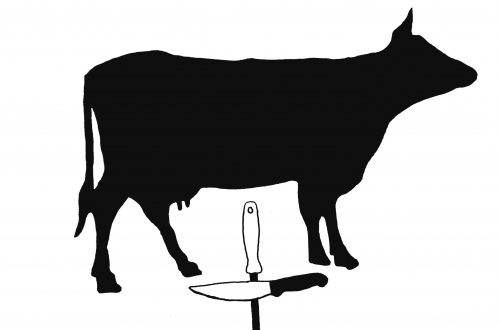by Catherine Campbell
Catherine’s essay appears in Episode 14 of The Dirty Spoon Radio Hour, which originally aired on September 6, 2019.
When my new stepmother said, “I’m Moravian,” I thought she said I’m a Mormon so I proceeded to roll with that fact for years. I was ten years old; a kid. I had absolutely no interest in my dad’s new wife’s background, only her foreground: the way she treated my father, my sister, and most importantly, the way she treated me. She was, after all, my first and only stepmother and I didn’t have much to go on about what it was like to live in the world of stepmothers except that they were probably evil. Look at the Disney cartoons, the fairtytales, the after school TV shows.
My stepmother, Dianne, turned out to be neither evil nor Mormon. When she said “Moravian” again, I didn’t quite understand because I had been raised in a southern Baptist town. My dad was a former Christian-turned-Buddhist, so he and my stepmom somehow met in the middle. They became Unitarians, and eventually attended the Unitarian Universalist church down the street from their home.
What Dianne practiced, mostly, was the Moravian tradition of food. Over the last twenty-five years of their marriage, my dad and stepmom have lived in the Yadkin River Valley, outside Winston-Salem, North Carolina, and in the heartland of some of the original Moravian settlements. One of the first times I heard the word “Moravian,” it was uttered with the words “sugar” and “cake.” Whenever I visited them on a summer and holiday break, or driving in to spend the weekend away from college, Dianne would serve me pieces of her homemade sugar cake, its thumb-pressed pockets of dough filled with little icing pools of butter, sugar and cinnamon.
Taste helps me burn things into memory. After that, I never forgot that Dianne came from Moravian traditions. And until that point, I didn’t know that religion could be so effortlessly mixed with food.
But first, a quick history lesson…
The Moravian Church originated more than 500 years ago in the ancient land of Bohemia and Moravia. It’s known today as the Czech Republic. During the 18th century, Moravians split from the Roman Catholic Church and formed their own communities in Europe to preserve their culture and beliefs. See, they didn’t hold the belief that congregations must be formed to spread their church and belief systems like other Protestant denominations. As followers of John Huss, a Bohemian heretic who was burned at the stake in 1415, were scarred by extreme persecution, the Moravian story is similar to that of the early Christian church. Bibles were confiscated and burned, villages were destroyed, leaders were executed, and followers were forced to flee. Still, a remnant survived. Today, they are small in numbers, but they still exist.
They came over from Europe to America. The settlement of Bethabara in what is today Winston-Salem, North Carolina, was founded on November 17, 1753 when fifteen Moravian men arrived after walking all the way from Pennsylvania. Bethabara was the beginning of a series of Moravian settlements on the 100,000-acre tract the Moravians had purchased on the Carolina frontier. These fifteen men settled into an abandoned cabin at the end of their six-week journey down the great wagon road. They were a long way from their homes and families in Pennsylvania. Following a simple meal, the men prepared what’s called a lovefeast, a traditional Moravian ceremony of sharing bread or cake and coffee, wine or tea.
The Moravian town of Salem, North Carolina, was established in 1766. Salem merged with Winston in 1913 creating the city of Winston-Salem, the only hyphenated name recognized by the U.S. Post Office.
Today, in the Piedmont of North Carolina, where my father and stepmother live along the Yadkin River, there is a Moravian culinary trail and if you follow it, you’ll discover dishes you’ve perhaps already tasted without having a clue as to their persecuted background.
Being as food curious I am, I decided to explore this culinary trail, but I didn’t get very far. You see, I had planned to visit a handful of restaurants, interview a bunch of chefs, explore and taste and cook all the Moravian foods I could find…but I got distracted.
By a cookie.
With more than a million pounds baked here each year, Winston-Salem has been named the epicenter of the Moravian Cookie production. This simple cookie is a worldwide wonder for its ability to adopt different flavors and be rolled out incredibly thin. Some bakers even call it “the world’s thinnest cookie.”
And there’s one place in the Piedmont that has been making these cookies…by hand…for more than a century.
***
Travis Hanes and his wife Evaa own Mrs. Hanes’ Moravian Cookies. Evaa is the matriarch in a long line of women who have been making the same Moravian cookies in Clemmons, NC, a suburb of Winston-Salem, for over 100 years. Evaa and Travis started their cookie empire in the 1970s, and today, their daughter Mona and son-in-law Mike work alongside them.
Located on Friedburg Church Road, Mrs. Hanes’ Moravian Cookies isn’t much to look at from the outside: it’s a big gray warehouse with one small entrance and a window. When I pull into the parking lot, I see a couple of young women tucked around the corner of the building, checking their phones in the cool shadows of the loading bay, their hair nets drooping. It’s July and already a swampy heat is weighing down on my shoulders as I gather my camera pack and notebook and head inside. A few weeks ago, I arranged to meet with Travis, Evaa and the Hanes family. They invited me to tour their factory. I’m here because I’m fascinated by this family-owned cookie business for several reasons, one of them being a personal way to find another common thread between my own family and my stepmom. And I’m full of questions:
- How have they stayed in business over the last four decades?
- Why exactly did Oprah name Mrs. Hanes Cookies among her favorite delicacies?
- How do they possibly produce more than 110,000 pounds of cookies each year, by hand, in a world that is now fully automated?
- And furthermore, why would they want to keep it doing it that way?
I needed to know the big deal about something so small.
“We’re primarily in the mail order business. Probably about 70% of our business is mail order,” Travis says. “We do a terrific retail business here because we’re the only people that still make cookies by hand. All the other cookies…if you get a Moravian cookie, and if it’s not Mrs. Hanes’ name on it, it’s not made by hand. Years ago, there used to be hundreds of individuals who made what they said was a Moravian cookie. Ginger is the most popular flavor, and that’s just one of the things that the Moravians brought with them from Europe. Hundreds of ladies made it and it didn’t make any difference whether [they were] Methodists, Baptists, Catholic, Moravian, whatever. They made them and they stored them in cans like this, and it was just a Christmas treat. We have about 8,000 of those cans that we fill up now by hand.”
I ask Travis how exactly they keep up…
“During the year, we never stop baking,” he says. “We never stop. But probably 70% of our annual production is shipped out in about an 8-week period at the end of the year. So we’re kind of like a farmer. Takes a long time to put out the crop, and you’ve got to tend to it, and you’ve got a short time to harvest.”
“But it’s a very enjoyable business,” he adds. “Now my wife is about the 7th generation of cookie makers in her family. We live at the old homeplace, which is next door.”
The home place Travis speaks of was built in 1840 by Evaa’s great-great-grandfather, Jonathan Fischel. Her grandfather was born in that house. Her father was born in that house. She was born in that house. Evaa and Travis live in the house now, after taking down part of the log home and restoring it. We move around the warehouse packing room, talking. At the back wall, he opens a gray heavy door where, to my surprise, a green astroturf sidewalk, just like a red carpet, unrolls all the way up the hilly steps to the house next door. There it is. The homeplace, shaded by old growth trees and where I glimpse colorful flowers in full bloom before Travis closes the door and leads me further into the cookie warehouse operation.
###
The Moravian cookie is just one of the cultural pieces these people brought with them from Germany and the Czech Republic, and Travis reminds me of the culinary trail I so quickly forgot. Sugar cake, chicken pies, cookies, bread…these, along with the Moravian star-shaped lamps lighting up those piedmont North Carolina porches every December night, are physical reminders of a people who are small in numbers but mighty in innovation. Their simple recipes remind me a lot of my own poor Appalachian childhood, where dollars were creatively stretched to make each meal count as two.
Travis leads me down a long hallway lit by florescent lights. One side is a dark wood panel wall, on the other side is a glass window enclosed room. They call it the “packing room.” It’s currently empty, the staff are elsewhere on their shift, and Travis suggests we wait until some of the staff come back so I can get a good look at the rolling and packing process. All I know is it sounds intense. I’m starting to become aware of how the smell of cookie dough fills every inch of this place; it relaxes me, makes me feel like a kid again.
I ask Travis how old he is.
“How old do you think I am? You won’t embarrass me,” he says.
“Um, 70?”
He chuckles. “How about 87? And my wife, she catches up with me in November. My birthday’s in March. She’s 86 now.”
“Do you work here every day?” I ask.
“No,” he replies. “But I come down here most every day and…odd jobs, I can do that. I tell ‘em I’m an unpaid employee now.” He laughs. “I guess it’s probably been almost 20 years since we were totally in control. We turned it over to our oldest daughter, Mona, and our oldest son, and they run it from that period of time. Now, they’re getting ready to retire.”
We shuffle a few steps down the hall and stop, shuffle and stop, and meander along for nearly half an hour, talking about the past. When Evaa’s mother and her grandmother baked cookies, they originally made them on a wood stove. Evaa herself learned to bake on a wood stove top. Now, Travis shows me a full-size antique stove that belonged to their family, its baking accessories still gathered across the top as if someone left in the middle of using it. I pick up a baking sheet that’s around 70 or 80 years old, running my fingers across the darkened impressions. A lot of cookies have been on this.
Along the dark wood panel wall are framed newspaper clippings and article cutouts, magazine covers and old brass plate awards. The Hanes family would say they’ve been blessed with so many free things that they couldn’t afford to buy, including publicity. They’ve been in every regional magazine, they’ve been on the Food Network, appeared on public television, and in 2010, were named one of Oprah’s “favorite things.”
But I get the sense their profit margins from a cookie company are very, very tight.
The husband and wife team technically started in the 1960s, making cookies in their home, then out of their basement. Before Evaa and Travis went full-time into the baking business, Travis still worked in the sweet life, working as a district sales manager, representing candy and Beechnut chewing gum. He basically introduced Lifesavers Candy to western North Carolina. As he says, he was working for “small things and small profits.” And while he enjoyed it, the entrepreneurial spirit and baking side of things kept beckoning him and Evaa. The last year he worked in chewing gum and candy was 1974, and he says it’s like he’s been on vacation ever since.
“We’ve had 7 expansions,” he explains. “One thing we have tried to do: we tried not to take on more than we could handle. When you’re making cookies by hand, you’re limited in production. It’s very time consuming, and so we just moved gradually. As we needed more space, we’d add another addition. We haven’t done any great planning, but we have really been blessed with a lot of free advertising, just from our customers. We’ve had probably around, I don’t know, 65,000 people on our mailing list. Everybody on there has had our cookies. We don’t buy, never bought a name. It’s because everybody were previous customers. It spread the word, and really and truly, that’s been a blessing.”
I’m amazed at how this bakery and cookie business steadily grown, because it’s hard to sustain your growth year over year when you’re doing something by hand and you can’t just easily automate or scale up production when you feel like, and scale down at the touch of a button because you’re hiring real people to work and to produce. You’re dealing with people’s lives and livelihoods, and that can be challenging when you’re growing to meet demand, and having to time it just right for seasonal hiring.
“From 1960 until now, we’ve only had one bad year.” Travis looks around the room. “What we normally do is we make all the cookies we can and sell all we make, and at the end of Christmas time, we may have a day or two of production on the end. In 2008, we had 2 months’ supply of cookies. Now, this wouldn’t have been a problem if we wanted to sell those cookies because they were all ginger. Ginger is the most popular. Has practically an unlimited shelf life. There is no dairy product. There is no eggs. It’s all plain flower. It’s brown sugar. It’s black molasses. It’s 4 pure spices. So there’s nothing to go away. You can keep it as long as you want to, as long as you keep it in a tight container. Our concern was not the cookies. We could have cut down and took off a month or two and had a good year. But we were concerned with these people we’ve got out here. We’ve had several people retire after 30 years. Now, it used to be, up until the past, we’ve had several retire in the last 5 or 6 years, but if you go in there now, probably if you took and added—even with the young ones we’ve got in there—if you added the time of service together, it would probably be between 10 and 15 years. The only thing we’ve got here better than the cookies is those people in there making them.”
###
Mrs. Hanes Cookies may be one of the few large food brand products still fully made, let alone made by hand, in this country, and that is why they’re so unusual. They’ve been able to survive, thanks to their many loyal customers and by their story spreading from person to person. Years ago, US News & World Report selected 12 food items they recommended for Christmas through mail order. One was Mrs. Hanes’ cookies. Not only did they recommend it, they put a picture. They put a price. And Travis says they received 3,000 new mail order customers. It was their first year since 1960 that they made a bigger profit. Since then, they’ve grown this little space from about 2400 into 36,000 square feet. They transformed the land from a small dairy farm to a building that kept rippling out. Where I’m standing now, in this hallway, used to be a pond.
Late 2008-2009 was their only bad year. With a couple thousand cookies leftover in storage, they had to unload their product. They gave it to charity: Northwest Food Bank, Pastor’s Pantry, Sunnyside Ministry, wherever they could give. Then they met with their workers and explained to them they would have to cut back their work week. They refused to shut down. Instead, they worked 4 days a week for 9 months, keeping everyone on payroll and insurance, and in 2009 they worked back up from a 4-day work week to five days. In 2009, Oprah’s friend Quincy Jones sent her a pack of Mrs. Hanes Cookies as a holiday gift. He sends them every year, around two or three hundred, to celebrity friends and family. When Oprah decided to include them in her favorite things for 2010, Mrs. Hanes fully recovered, thanks to the national spotlight. It brought in a ton of walk-in traffic. And Travis says that although mail order will never what it was prior to 2008 due to the costs of shipping, they’ve still never had a layoff and never had to shut down.
Mrs. Hanes team bake six flavors: sugar, lemon (Mr. Hanes’ favorite), black walnut, chocolate, butterscotch and traditional Moravian ginger. These ingredients are natural preservatives, and can be stored a long time. Because most traditional recipes made such large batches of dough, not all the cookies have to be baked at once. Storing the dough for days or weeks during the winter months was commonplace back in the old Moravian days. Bakers knew that as the dough rested, the flavors intensified
Travis points out the flavors to me in the packing room. “Ginger, most popular. That’s the traditional Christmas flavor. Sugar crisp, or sugar cookie, is a vanilla flavor, and it’s our second seller. Then is lemon. Then it’s walnut. Then it’s chocolate, and butterscotch.”
He promises to give me samples along the way, which he does. I hate that I forgot to bring a water bottle with me. My mouth is full of cookies during the tour.
“The difference, I can tell you that—we’ve got no secrets—but the sugar cookie is a secret recipe. It is a family recipe. It’s different from any recipe I’ve ever seen. We’ve limited to 6 flavors because when you’re making all you can, and selling all you make, there’s no need to add another item because that means another inventory that you’ve got to look after. So we just sort of limited it to that. The last, newest flavor we’ve got is probably about 20 years old, more 25 years old, that’s the black walnut. It does have walnuts in it, fresh walnuts.”
The shelf lives of these cookies is phenomenal.
They can last for months, and the flavor may fade only a little.
They freeze easily.
While we’re talking, a woman walks in, walks into the “packing room,” sits down and promptly starts neatly assembling and wrapping stacks of cookies in wax paper and arranging them in tins. This is Debbie. She’s 58 years old, and has the most perfect hands I’ve ever seen. I snap a few photos of her wrapping cookies while she tells me that she started working with the Hanes family when her daughter started middle school. She used to be a stay at a home mom. Now, she’s been rolling cookies in the warehouse for the last 19 years.
“I roll cookies all day,” she explains. “I cut cookies. I am one of those ladies that you watched up front at the window, so I’m one of those that rolls the cookies real thin and puts them out on the pan and on the rack. So I’m rolling cookies all day long, and then I am giving tours when needed, and then I’m also packing when needed for the tours. Then starting on the 29th, we have our seasonal ladies that will be coming in, and they will be doing the packing until the end of the year, so then I won’t be needed to do any of the packing.”
###
In the factory, they have two cookie dough mixers. One will mix up 100 pounds of dough. The other one mixes 700 pounds. They can store up to 7,000 pounds of dough thanks to refrigeration, and you can keep it as long as you like, even in the freezer. For their production, they usually make up to 4,000 pounds of cookies at a time, which takes approximately 4 to five hours. Then there’s two hours of clean up time and steam cleaning.
As I move from rolling room back to the hallway, I have to don a hair net before we step into what I would call the rolling room, the sounds shift and so does the atmosphere.
This is essentially the heart of the bakery operations and where Mrs. Hanes’ Moravian Cookies thrives.
From deserted dark hallway, I enter a buzzing space with tons of plywood tables set up across a wide room. The plywood tables are angled up like architect’s desks, and the employees are bent over slightly, using their full bodies to run rolling pins back and forth, back and forth, thinning out the dough, cutting out cookies and gently placing them on sheets.
In the back of the rolling room, ovens are built into the walls. Countless baker trays and rolling carts stand at the ready, holding wafer thin raw cookie cutouts. All the employees are women, and all of them are wearing headphones. One of them is Betty Brown, who has been employed with Mrs. Hanes Cookies for thirty-two years.
“Do you permanently smell like cookies now?” I ask.
“I don’t smell it when I go home, but everybody else can smell it,” she laughs. “I call it the essence of ginger.”
“Have you just been rolling for 32 years?”
She thinks about it for a second. “Mm-hmm, yeah.”
I’m amazed. “Do you ever…is it ever something where you think, Maybe I want to do something else or is it just really peaceful?”
“I like doing it. While we’re working we can listen to books. And it’s real soft dough now. I love soft dough. The ginger dough is harder, and I get [more] tired at the end of the day, but I like making cookies. I bake when I go home, so I bake a lot at home.”
She explains that the hardest part of the job is getting the correct thinness. Too thick, they can’t use them, if they’re too thin, they can’t use them.
The cookies distinctively thin texture evolved over years of baking for several practical reasons. The thinner the cookie, the more dough could be stretched to produce more cookies.
Each employee in the bakery has her own station, even her own signature mark on her cookie batches.
They mark each pan with a special cookie cutout mark, so the other bakers know who made that particular cookie. When the cookies go into baking, they may suggest, “Mary, you need a little more flour, or a little less flour.” That’s Mrs. Hanes’ quality control system.
They’ve been able to get and keep good people. it’s a love of the work. Everybody in that room is on a salary. Everybody in that room gets a bonus. Most people make around 30 pounds of cookies per day. Some can make 40. Some can make 50, and they’re rewarded for this extra production. But every cookie they make is perfect. It doesn’t have any bubbles or imperfections in it. If it has a bubble, it can’t be pack it in a mail order tin because it’ll crush it.
As I walk around quietly observing them, it strikes me that these employees innately know the recipes as naturally as they know the smell of their own child’s hair, or the sound of their spouse’s car pulling into the driveway at night. Travis tells me they know just from touch or from the aroma exactly how much flour to put in the second rolling batch because there’s already flour in it. It’s the experience that makes these cookies taste different from any manufactured cookie. It’s the human touch. And that’s the secret. He says if a machine could work, they would have a machine, but they’ve never found anything that could replace the ladies and what they do. I watch Betty and the other women roll scraps into fresh dough, and she knows how much flour to put in that second batch, when she rolls it out there the second time. That’s how the flavor is controlled. A machine can’t do that.
###
Two years ago, their oldest grandson, Jedediah, who grew up in the bakery, graduated from college. After doing other jobs for a couple years, he came home to work on his writing while working in the bakery. He has since bought a home here and settled. Travis thinks the best thing about it is that not only does Jedediah have the background in the bakery business, he has the knowledge to repair refrigeration, ovens, do electrical work; he’s even revamped the company’s whole computer system. If he wants a part to fix this, he just goes out and gets it, brings it in and puts it together. If Travis and Evaa are the past, and Mona is the present, Jedediah is the future. If he wasn’t coming in to help with the business, if he hadn’t volunteered to wear the mantle of htis legacy, Travis says, Mrs. Hanes Moravian Cookies may no longer be here. But fortunately, Jedediah is stepping up, and he loves it.
“What do you think is the future of the Moravian cookie?” I ask.
Travis thinks about it for a minute, looking out across the bakery.
“Well, as long as we can get the people, and now that our grandson is back here, I see a good future.”
He gently takes my hair net and his own and tosses them in the trash. After the tour, I wander with Travis up to the home place, where I briefly meet Evaa and sit and talk for a few minutes with both of them. Evaa is soft spoken. Three years ago, she was diagnosed with breast cancer and at her age, the prognosis and treatment have made her tired. I don’t linger too long. Before I leave, Evaa gifts me a copy of her cookbook, a local published favorite. I vow to try to cook some Moravian recipes when I drive back to Asheville after the weekend. It looks like I’m taking the culinary trail home with me.
###
I think about my own family legacy and how sometimes we come around to our past and bring in new threads with new discoveries. A Moravian lovefeast is a ritual of sharing food, sharing where we came from and what we have, no matter how little. The Moravian church is also known as Unitas Fratrum, a Latin term meaning Unity of Brethren. They have a simple motto, one I hope to remember as I return home, where my father and Dianne will be waiting for me, probably with some snack on the table, some refreshing drink in a glass…
“In essentials, unity; in nonessentials liberty; and in all things, love.”
Original artwork by Garnet Fisher.






